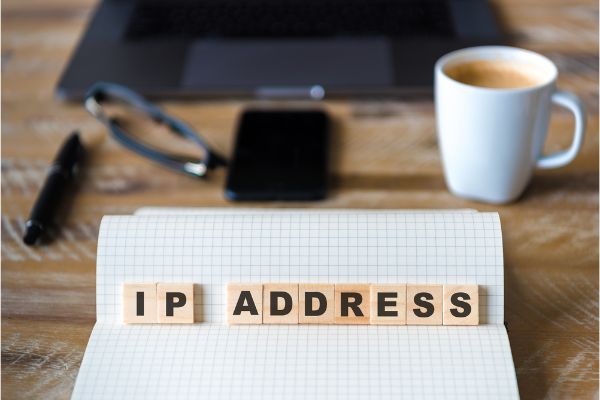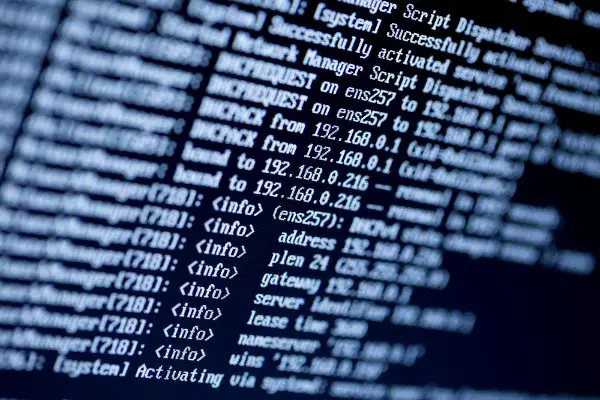Disclaimer: This post may contain affiliate links, meaning we get a small commission if you make a purchase through our links, at no cost to you. For more information, please visit our Disclaimer Page.
As the internet becomes more and more ingrained in our lives, so do the problems that come with it. One of these issues is dealing with an invalid IP address. If you’re getting this error message, there’s no need to worry; we’ve outlined probable causes and their fixes below.
A few of the common reasons why an IP address becomes invalid are using reserved IP address ranges, using invalid IP addresses, using non-standard IP address formats, outdated IP addresses, DNS configuration issues, network card problems, and IP address conflicts.
Let’s consider these probable causes in detail, below.
Table of Contents
10 Reasons You Could Be Getting the IP Address Invalid Error
If you’re reading this, there’s a good chance that you’ve been getting the IP address invalid error and are looking for some help. In this section, we will discuss 10 reasons why you could be getting this error and how to fix it.
1. The Ip Address Is Outdated
If the IP address of your system changes over time because of factors like moving locations or changing providers, then other devices won’t recognize its identity anymore and will reject any incoming traffic until they update their records.
2. DNS Configuration Does Not Match the External IP
The DNS is the system that converts domain names into IP addresses. If you are using a particular website regularly, then it will store its IP address in your computer’s cache so that next time when you type in the URL for this site – instead of having to look it up again on an external server.
If these two things don’t match up (for example, if someone was trying to spoof their own IP address), then the client wouldn’t be able to reach any servers connected through that ISP because it would think they were invalid or nonexistent.
If you’re getting an error message like “Error: Unknown host”, this means your DNS configuration does not match with what’s coming from outside.
No worries though, this is easily fixed by doing a DNS flush on Windows machines or Linux/Mac OSX systems using the following command prompt: ipconfig /flushdns
3. Some Devices Are Not Visible to the Internet
There are several devices that we use daily that are not visible to the internet and don’t have an IP address assigned to them. Things like printers, smart TVs, or even some gaming consoles will fall into this category.
If you’re trying to access something on your network that is not routable (meaning other devices on the network can ‘t see it), then you’ll get an error message like “The page cannot be displayed”.
This is usually because either the device isn’t turned on or it’s not properly configured to be visible to the internet.
4. The Computer Is Not Connected to the Internet
If there is no connection available, then you’ll get an error message like “The page cannot be displayed” or “Cannot find server”.
This could mean one of two things: either the computer isn’t connected to any internet source at all (such as wi-fi) and therefore it can’t reach out for help in resolving DNS names etc., or there is an issue with the network adapter on your machine which means it can’t communicate over TCP/IP.
An easy way to test if this might happen would be by plugging in an ethernet cable directly from your router so as not to rely on wireless signals being picked up; if that works, then there could be a problem with the wireless card on your computer.
5. A Network Card That Is Not Plugged in or Set Up Correctly
It’s likely that your computer is trying to communicate with a network card that isn’t physically plugged in or set up correctly.
This will usually happen if you’ve just installed a new network card and haven’t gone through the proper steps of setting it up so that other devices can use this device over TCP/IP.
To fix this problem, go into your computer’s control panel (usually found under Start Menu > Control Panel) and select “Network Connections” from there. You should see an entry for each network card you have on your machine; once selected, make sure the “Status” is set to “Enabled”.
If you’re still having problems after doing this, then it’s likely that your network card isn’t compatible with your version of Windows or there could be a driver issue. In this case, it might be best to try reinstalling the drivers for your network card.
6. Virus, Malware Threats
Malware, spyware, adware, viruses, Trojan horses, and other malware programs are preventing access to websites, or are redirecting web traffic to illegitimate websites.
These programs can also cause IP address conflicts or hide the real IP address of a computer. To avoid these issues, make sure to regularly scan your system for malware and viruses.
If you suspect that there is a problem with the IP address, check to see if any other computers are experiencing similar problems. If so, then it might be time to investigate further into the issue.
If you’re using a public Wi-Fi connection, make sure that it is protected by a firewall and not open to the public.
7. Duplicate Address Assignment
Some of these addresses are reserved for special purposes, such as to use by routers in a network or local loopback devices that aren’t connected directly to another computer.
Other addresses may be used by an ISP’s customer base, but when these addresses are reassigned to a new customer, the old customer’s device can no longer be used.
If you’re getting an error message that says “Cannot find server”, it could be because another computer on your network is using the same IP address as your machine.
To fix this problem, you’ll need to free up the IP address that is currently being used by your computer.
There are a few ways to do this:
- Change the IP address of your machine
- Configure your router to assign dynamic IP addresses instead of static ones
- Disable IP auto-configuration in Windows
If you’re still experiencing problems after trying these steps, then it might be time to contact your ISP and ask them for assistance.
8. Using An Unsupported IP format
The most common IP address format is IPv4, but there are other types of addresses, such as IPv6. Using reserved IP address ranges, using invalid IP addresses, and using non-standard IP address formats are all common ways to get an error message when trying to connect to your server.
If you’re not sure whether or not the format of your IP address is supported, you can check the [supported formats page on the IANA website. If your IP address doesn’t fall into one of these categories, or if you’re not sure how to fix the problem, you can contact your ISP to see if they can help.
If it’s not a problem with the format of your IP address, then maybe there is something wrong with the connection between you and the server or application. If this is the case, then you should check that everything else on your network is working correctly.
9. Older TCP/IP Stack or Cache
If you are using an older TCP/IP stack or cache, this can also cause your IP address to become invalid. Make sure that you are using the most up-to-date software and drivers available. You can check for updates by visiting your device manufacturer’s website.
Clearing out the TCP/IP cache and resetting your TCP/IP stack may also help. Run the commands “ipconfig /flushdns” and “ipconfig /release”, then reconnect to your network.
10. VPN and Firewall Issues
A VPN or firewall could potentially block access to the server’s IP address.
If you are using a VPN, try connecting directly or changing servers.
Try reinstalling your firewall software and then restart your computer. Then open Command Prompt and ping the website again by typing “ping [website] -t” (without quotes). If it says, “Request timed out,” then the problem is probably caused by a firewall issue that prevents you from accessing websites hosted on certain servers.
Disable your firewall and then restart your computer. Then open Command Prompt and ping the website again by typing “ping [website] -t” (without quotes). If it says, “Request timed out,” then there might be a problem with your router or modem settings that prevents you from accessing websites hosted on certain servers.
4 Ways for Identifying an Invalid IP Address or Network
There are several ways that you can identify whether or not an IP address is valid for your network. You will want to make sure each of these methods has been checked before proceeding with any other troubleshooting steps:
–Check the hostname associated with the IP address and see if it resolves back to that same number by using a DNS lookup tool like nslookup or dig. If so, then this means there’s probably nothing wrong on your end; however, in some cases where hosts have assigned themselves multiple addresses from different ranges (e.g., localhost), they may resolve back to one another incorrectly due to how DNS works over networks.
–Run “ipconfig /all” from your Windows Command Prompt to get all DHCP settings for each network interface. The “IP Address” line should show whether or not an IP address has been assigned successfully, and you’ll also see a listing of DNS servers that are being used by default (these will typically be the ones provided by your ISP).
-Try using ping with different parameters
–Run “nslookup” commands against other hosts on your local network and compare results to see if they’re consistent across all devices connected via Ethernet cable or WiFi connection (e.g., laptop, tablet). If there’s something wrong with one device but not another then it’s likely localized only at that location.
5 Ways to Troubleshoot Invalid IP Address Errors
If you’re getting an invalid IP address error, there are five things that you can do to fix this issue:
1. Try Changing Your Internet Connection
Use a different method of connecting to the internet than your current one. For example, if you’re using Wi-Fi then try plugging in your computer directly via Ethernet cable or vice versa; it might be a problem with how those devices communicate rather than something specific like DNS servers not resolving properly on either side of this connection (e.g., router vs modem).
2. Reset TCP/IP Cache
If you’re having trouble connecting to a network, try resetting your IP stack by running “ipconfig /flushdns” and “ipconfig /release”. Once that’s done, reconnect using any wired or wireless networks available nearby. You could also try disabling the firewall on your computer temporarily until everything has been resolved.
3. Set Your IP Address Manually
If all else fails, set the IP address manually on your network device. This is typically done using the “static IP” feature. How you go about doing this depends on your device and operating system, so it’s best to consult your network hardware or software manuals for more information.
- If you’re using a DHCP connection then resetting the router should automatically release the IP address that was previously assigned; however, if you’re using a static IP then you’ll need to release the address manually by going into your router’s settings.
- Enter the new IP address, the expected Subnet Mask, and the ISP-provided Default Gateway(the last two are typically provided automatically).
- If you have any other devices that are also set to DHCP on your network (e.g., smartphones), then make sure those settings have been reset as well before attempting this again.
- If you don’t know how to do it, then look up instructions online or contact your ISP for help with changing IP addresses since they’ll be able to provide step-by-step guidance tailored specifically toward them).
4. Restart Your Router
If none of these steps worked, try restarting your router. Do this by unplugging it from its power source for about 30 seconds and then plugging back in again; if this doesn’t work then you may need to reset the device entirely (consult your manual on how to do so).
5. Contact Your ISP
If you’ve tried all of these things and still can’t seem to connect, then your last resort is to contact your ISP for support. They may be able to help identify the source of the problem and provide a solution.
- This could be anything from incorrect DNS settings on their end, problems with your modem or router, or something else entirely.
- Be prepared to provide them with as much information as possible, including your IP address (under the “status” tab), what type of connection you’re using, and the time of day when these errors are happening.
Final Thoughts
There are several reasons you might get an error message that says “Invalid IP/ Unidentified network/etc”. We discussed some of the most common ones in this article and outlined five ways to troubleshoot and fix them. If you’ve tried everything and still can’t seem to get your device connected, then it’s best to contact your ISP for more help.



